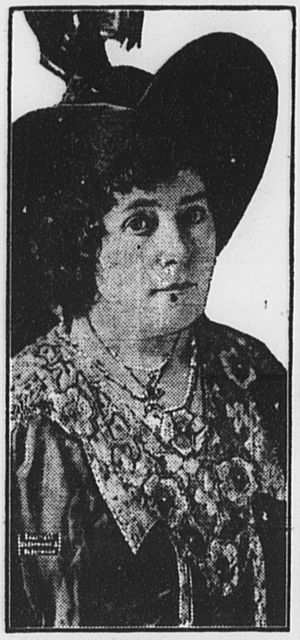Margarethe Lenore Selenka facts for kids
Margarethe Lenore Selenka-Heinemann (born October 7, 1860, in Hamburg – died December 16, 1922, in Munich) was a German scientist. She was a zoologist (someone who studies animals) and an anthropologist (someone who studies humans). She was also a feminist, meaning she worked for equal rights for women, and a pacifist, meaning she worked for peace.
Margarethe Selenka was well-known for studying apes. She also led important science trips to the Dutch East Indies, which are now parts of Indonesia.
Contents
Early Life and Science Adventures
Margarethe Heinemann was born into a family of merchants. In 1893, she married Emil Selenka, a professor who taught zoology at the University of Erlangen. Emil had been married to Margarethe's sister before.
Because of Emil, Margarethe started to study palaeontology (the study of fossils), anthropology, and zoology. She became his helper. In 1892, she went on a science trip with her husband to places like Sri Lanka, Japan, China, and the Dutch East Indies.
While they were in the Dutch East Indies, Emil Selenka became very sick. He had to go back to Germany. Margarethe, however, stayed and kept working! She spent several months exploring the jungles of Borneo to study apes. When she returned to Germany, she and Emil wrote a book about their travels.
Working for Women's Rights and Peace
In 1895, the Selenkas moved to Munich. There, Margarethe became a professor at the Ludwig Maximilian University of Munich. She became friends with other women who believed in equal rights, like Anita Augspurg and Lida Gustava Heymann.
Margarethe joined the German movement that worked for women's rights and peace. They believed that violence against women at home was connected to countries going to war. Margarethe worked with Anita Augspurg, who was Germany's first female lawyer. They fought for women's suffrage (the right for women to vote) and for women to have the same legal rights as men in Germany.
Margarethe was also a strong pacifist. She believed that future wars could be stopped if countries talked to each other and created international laws. In 1899, she helped organize a big international event for peace.
Studying Human Ancestors
Margarethe and Emil Selenka were very interested in a discovery made by Eugène Dubois. He had found fossils of "Java Man" (a type of early human called Homo erectus) in Java in 1891. Dubois thought he had found the "missing link" between apes and humans. But not all scientists agreed, and Dubois didn't want to show his fossils to everyone.
Emil Selenka decided to organize his own trip to Java to find more proof. However, he passed away in 1902. Margarethe bravely decided to continue his work. She led the expedition herself in 1907-1908.
The trip didn't find more Java Man fossils where Dubois had found them. But it did a great job of mapping the layers of rock (called stratigraphy) and found many fossils of large animals from the Pleistocene Ice Age. Margarethe Selenka oversaw the report about the expedition, and it was praised around the world for being very accurate.
More Work for Peace
In 1904, Margarethe Selenka went to an international peace meeting in Boston. Later, she joined a different group that worked for women and families.
In 1915, she took part in another international peace meeting in The Hague. This meeting was started by Czar Nicholas II of Russia to try and stop the First World War. Because she was a peace activist, the German government placed Margarethe Selenka under house arrest. This meant she had to stay in her home.
See also
 In Spanish: Margarethe Lenore Selenka para niños
In Spanish: Margarethe Lenore Selenka para niños


